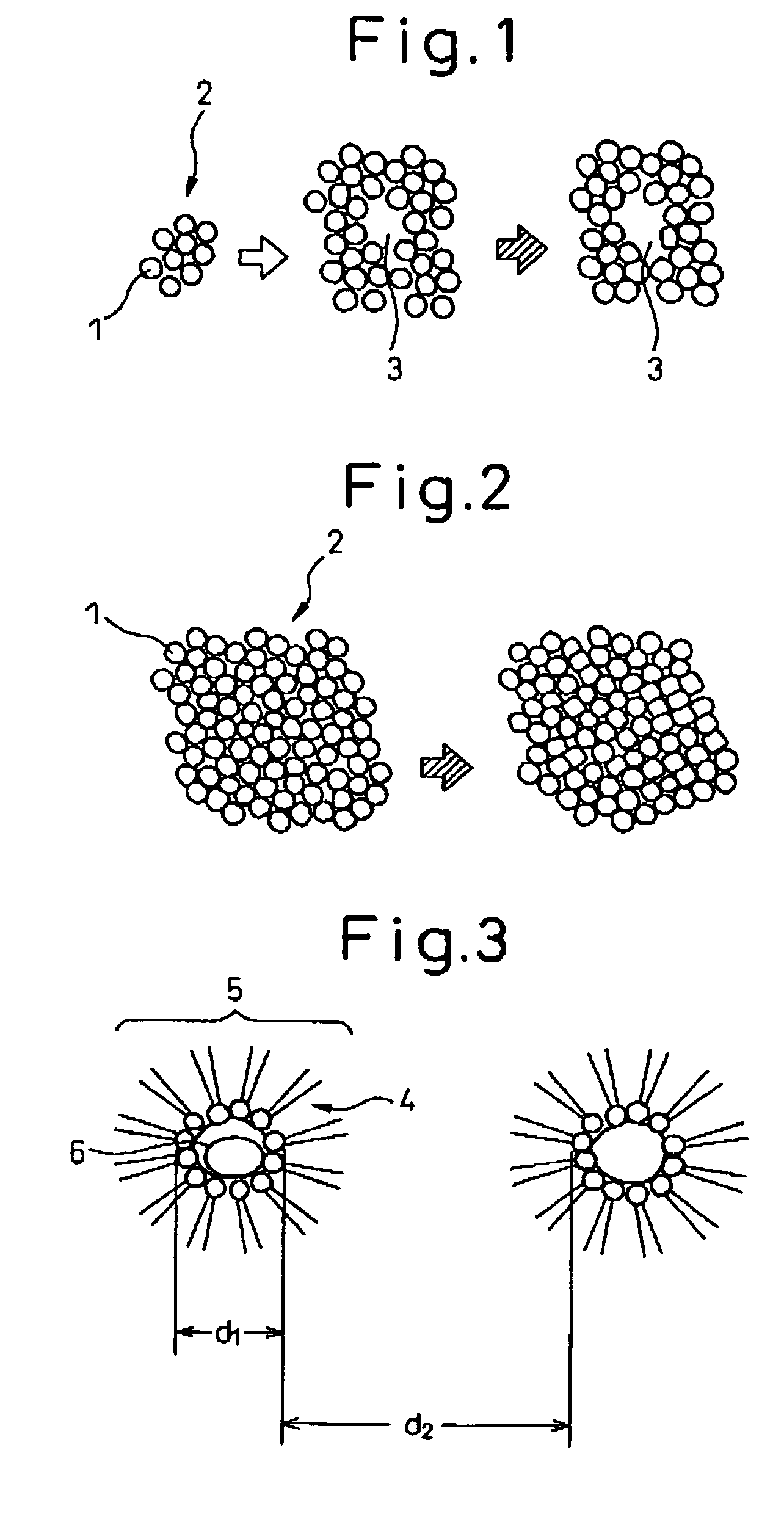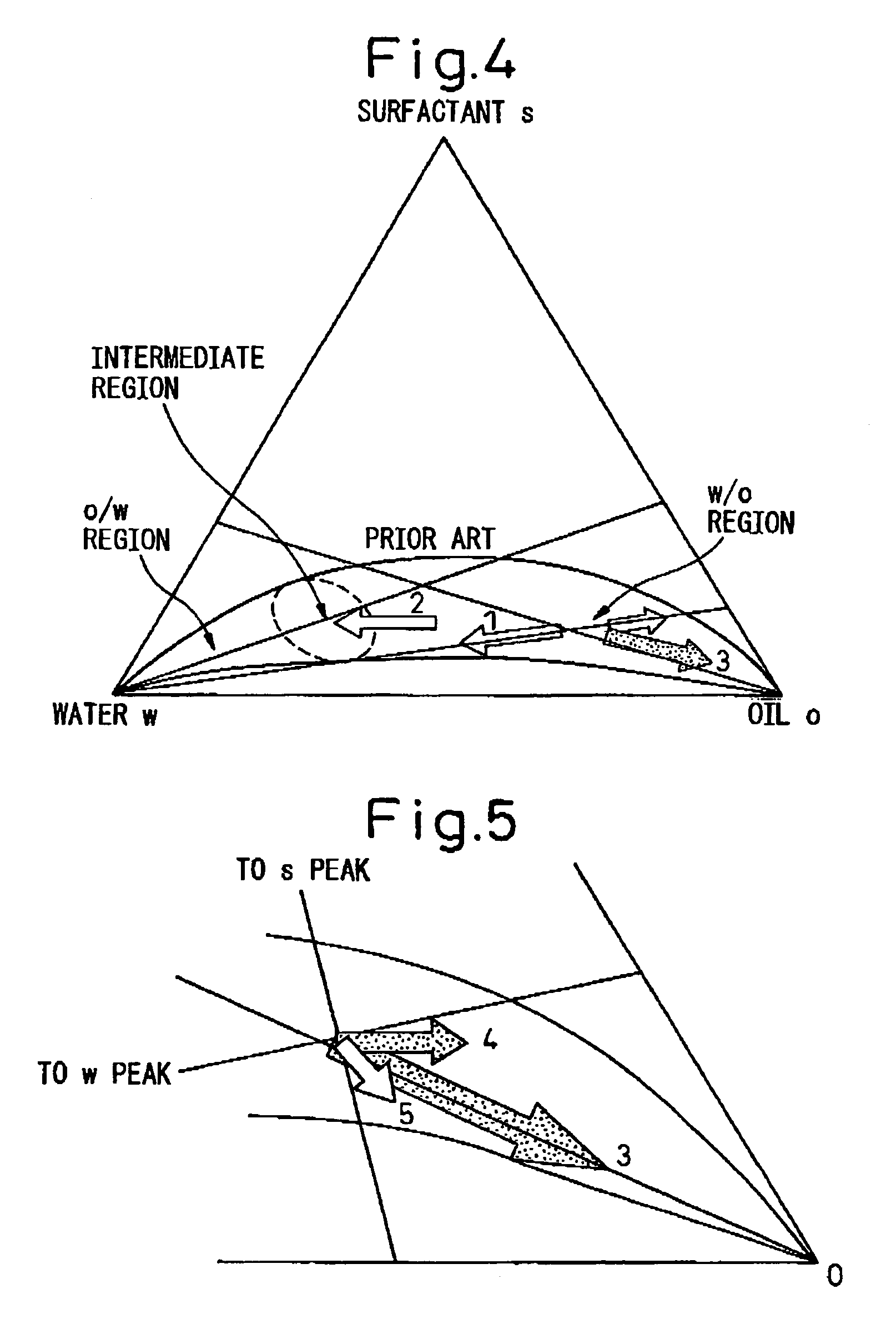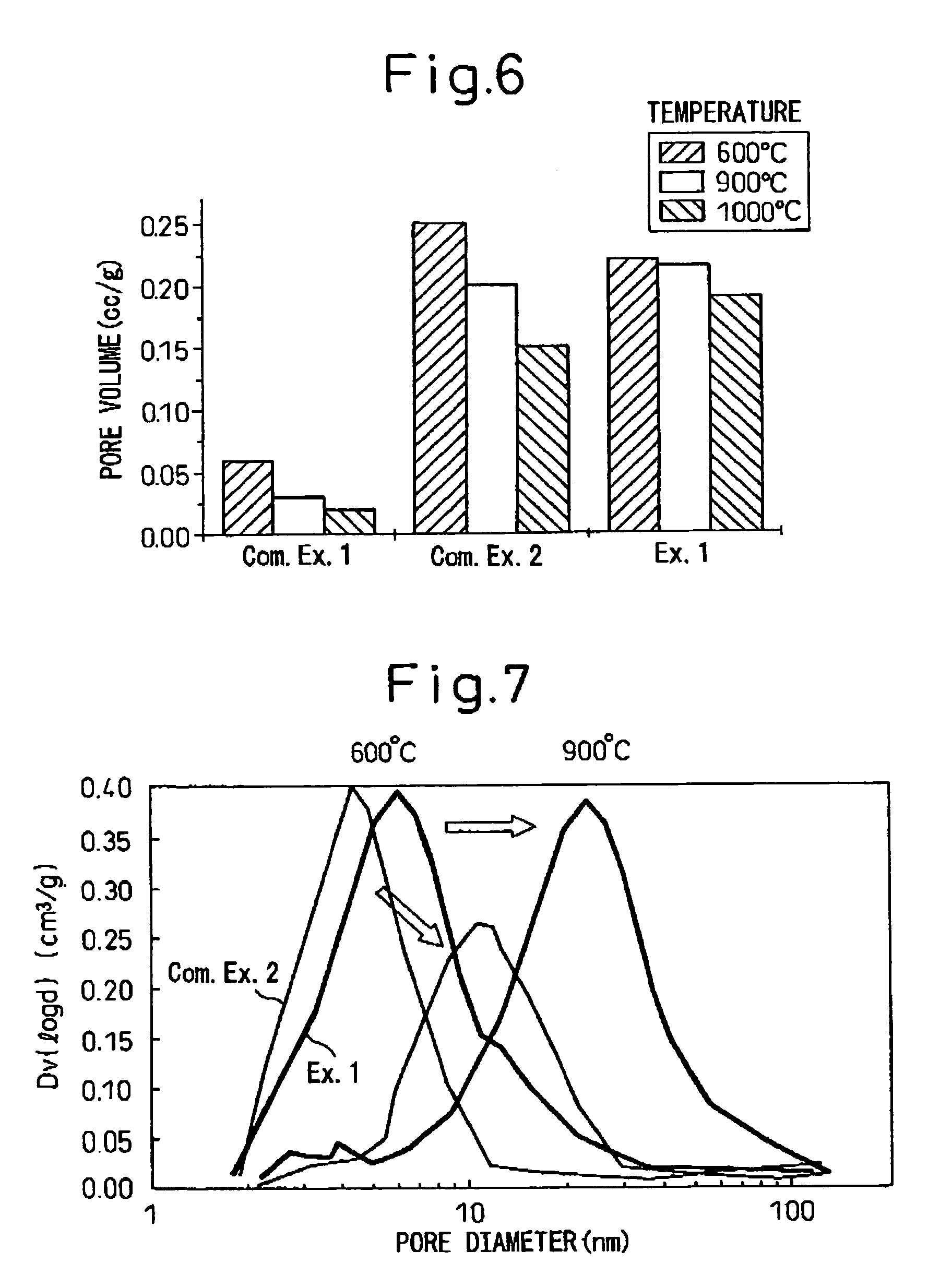Porous composite oxide and production method thereof
a composite oxide and composite oxide technology, applied in the field of porous composite oxides, can solve the problems of crystallization overall, difficult to obtain fine powders of composite oxides, and limit the fineness of powders, so as to reduce the pore volume, reduce the effect of performance and minimal thermal degradation
- Summary
- Abstract
- Description
- Claims
- Application Information
AI Technical Summary
Benefits of technology
Problems solved by technology
Method used
Image
Examples
example 1
[0087]8.6 liters of cyclohexane and 350 g of polyethylene (n=5) nonylphenyl ether were placed in a beaker having an internal volume of 15 liters followed by the addition of an aqueous solution composed of 43 g of cerium nitrate and 120 mL of distilled water and stirring. Reverse micelles (water-in-oil microemulsion, water droplet measured diameter: 17 nm) were produced at room temperature by stirring using a magnetic stirrer. Separate from this procedure, a zirconium alkoxide solution was prepared in which 50 g of zirconium butoxide were dissolved in 0.8 liters of cyclohexane, and this was then added to the aforementioned-microemulsion. The volume ratio of water (aqueous phase) to cyclohexane (organic phase) at this time was 78. When this mixture was stirred well at room temperature, the inside of the beaker immediately became cloudy and had a whitish-yellow color and colloidal particles (secondary particles, particle diameter; about 10 nm) were formed.
[0088]Next, the pH was adjuste...
example 2
[0089]SrZrO3 composite oxide was produced in basically the same manner as Example 1. Namely, 8.6 liters of cyclohexane and 350 g of polyethylene (n=5) nonylphenyl ether were placed in a beaker having an internal volume of 15 liters followed by the addition of an aqueous solution composed of 37 g of strontium nitrate and 100 mL of distilled water and stirring. Reverse micelles (water-in-oil microemulsion, water droplet measured diameter: 15 nm) were produced at room temperature by stirring using a magnetic stirrer. Separate from this procedure, a zirconium alkoxide solution was prepared in which 68 g of zirconium butoxide were dissolved in 0.8 liters of cyclohexane, and this was then added to the aforementioned microemulsion. The distance between reverse micelles at this time was about 22 nm. When this mixture was stirred well at room temperature, the inside of the beaker immediately became cloudy and had a whitish-yellow color and colloidal particles (particle diameter: about 10 nm)...
example 3
[0091]8.6 liters of cyclohexane and 350 g of polyethylene (n=5) nonylphenyl ether were placed in a beaker having an internal volume of 15 liters followed by the addition of an aqueous solution composed of 42.5 g of cerium nitrate, 30.1 g of zirconium nitrate and 120 mL of distilled water and stirring. Reverse micelles were produced at room temperature by stirring using a magnetic stirrer. Next, the reverse micelles were dropped into a reverse micelle solution containing ammonium in the aqueous phase and stirring was continued to form colloidal particles. Continuing, the colloidal particles were aggregated in the same manner as Example 1 to obtain a composite oxide containing cerium and zirconium (ceria-zirconia).
PUM
| Property | Measurement | Unit |
|---|---|---|
| pore diameter | aaaaa | aaaaa |
| diameter | aaaaa | aaaaa |
| particle diameter | aaaaa | aaaaa |
Abstract
Description
Claims
Application Information
 Login to View More
Login to View More - R&D
- Intellectual Property
- Life Sciences
- Materials
- Tech Scout
- Unparalleled Data Quality
- Higher Quality Content
- 60% Fewer Hallucinations
Browse by: Latest US Patents, China's latest patents, Technical Efficacy Thesaurus, Application Domain, Technology Topic, Popular Technical Reports.
© 2025 PatSnap. All rights reserved.Legal|Privacy policy|Modern Slavery Act Transparency Statement|Sitemap|About US| Contact US: help@patsnap.com



